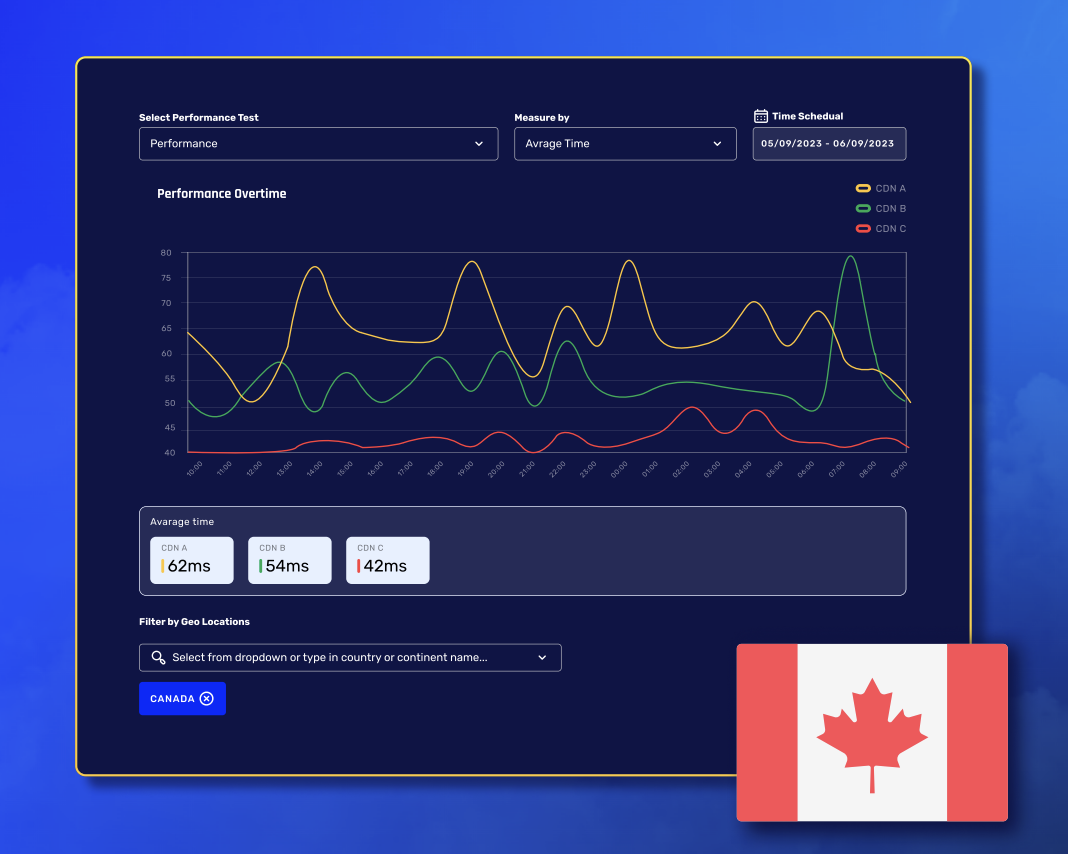CDN Performance Metrics: Strategies for Superior Content Delivery
The internet is a content hub, and a CDN acts like a high-speed delivery service, ensuring that web content reaches users swiftly and efficiently. Whether it's streaming your favorite show, downloading an app, or loading a web page, CDNs play an invisible yet integral role in making these experiences fast and reliable. For website owners, developers, and businesses, metrics related to CDN performance hold the key to smooth content delivery, enhanced user experiences, and staying competitive in the digital race.

The Role of CDNs in Content Delivery
Content Delivery Networks, commonly known as CDNs, are fundamental to how content is efficiently distributed across the internet. Their primary role is to reduce latency, the delay in transmitting data over a network, thereby ensuring that content reaches the end-user as quickly as possible.
Imagine a user in Paris trying to access a website hosted on a server in New York. Without a CDN, each request from the user must travel across the Atlantic, leading to significant delays. CDNs mitigate this by storing cached versions of the website content on servers strategically placed around the globe.
When a user accesses a website, the CDN redirects their request to the nearest server, known as an edge server. This drastically cuts down the travel time for data, making websites load faster and reducing the strain on the original server. This is especially vital for websites with high traffic or global reach, as it ensures a consistent and speedy experience for all users, regardless of their geographical location.
Key CDN Performance Metrics

You can gauge the effectiveness of a CDN and make informed decisions to optimize content delivery, enhance user experience, and maintain a competitive edge in the fast-paced digital world.
- Latency: This measures the time it takes for data to travel from the server to the user. Lower latency means faster content delivery, which is crucial for providing a seamless user experience, especially for real-time applications like video streaming.
- Cache Hit Ratio: This metric indicates the percentage of requests that are served from the CDN's cache rather than the origin server. A higher cache hit ratio generally means better performance, as it reduces the load on the origin server and speeds up content delivery.
- Bandwidth Usage: Monitoring bandwidth is essential to understand the volume of data being transferred. It helps in assessing whether the CDN can handle high traffic loads, especially during peak times.
- Throughput: This refers to the amount of data successfully delivered over a specific period. High throughput is indicative of a CDN's efficiency in handling large files or high-volume traffic.
- Error Rate: The error rate measures the number of failed requests compared to the total number of requests. A lower error rate is preferable, indicating reliable content delivery.
- Time to First Byte (TTFB): This metric measures the time from the user's request to the receipt of the first byte of data. TTFB is an indicator of the responsiveness of a CDN and is crucial for user experience.
- Geographical Performance: Since CDNs distribute content across various geographical locations, it's important to measure performance in different regions to ensure all users receive optimal service.
CDN Performance Optimization Strategies

To ensure fast, reliable, and efficient delivery of content to users worldwide, optimizing the performance of a Content Delivery Network (CDN) is mandatory.
These can lead to a better user experience, increased customer satisfaction, and potentially higher conversion rates.
- Optimize Content Caching: Fine-tuning caching policies can significantly impact CDN efficiency. This involves setting appropriate cache expiration times, understanding the best content to cache (like static files), and utilizing cache-control headers effectively.
- Use a Multi-CDN Approach: Implementing a multi-CDN strategy can improve performance and reliability. By distributing content across multiple CDNs, you can leverage the strengths of each, ensuring higher availability and reduced risk of downtime.
- Compress Data: Data compression reduces the size of files being transmitted, which can significantly speed up load times. Techniques like GZIP compression are effective for text-based content like HTML, CSS, and JavaScript.
- Optimize TLS/SSL Settings: Since secure connections can add latency, optimizing TLS (Transport Layer Security) and SSL (Secure Sockets Layer) settings is important. This includes using session tickets, enabling OCSP stapling, and choosing the right cipher suites.
- Minimize HTTP Requests: Reducing the number of HTTP requests can improve CDN performance. Techniques like image sprites, combined files, and inline small resources can be helpful.
- Leverage Edge Computing: Utilizing edge computing capabilities of CDNs can help in processing data closer to the user, thereby reducing latency and speeding up content delivery.
- Adopt HTTP/2 or HTTP/3 Protocols: These newer HTTP protocols offer improvements over HTTP/1.1, such as multiplexing and header compression, which can enhance CDN performance.
- Regularly Monitor and Analyze Performance: Continuous monitoring of CDN performance metrics helps in identifying and addressing issues promptly. Regular analysis can also provide insights for further optimizations.
- Geographical Optimization: Tailoring content delivery based on the user's location can greatly enhance performance. This involves understanding the audience’s geographical distribution.
- DNS Optimization: Since CDN performance is also affected by DNS resolution times, optimizing DNS settings can lead to quicker content delivery.
Bonus Tip: Monitor the Performance of Your Dynamic Content!

In web content, not everything is static. Dynamic content, which is content that changes based on user interaction or other variables, plays a role in delivering personalized and engaging user experiences.
However, managing and delivering dynamic content poses its own set of challenges, especially when it comes to performance optimization.
Monitoring the performance of your dynamic content is just as important as managing your static content. Here’s why:
- Monitoring ensures tailored dynamic content is delivered efficiently, enhancing user experiences.
- It's crucial for delivering up-to-date, accurate dynamic content like news or stock updates.
- Helps identify resource-heavy dynamic elements, ensuring optimal site performance.
- Essential for understanding how dynamic content responds to traffic changes and for maintaining performance during peak periods.
{{promo}}
Conclusion
In conclusion, CDNs, or Content Delivery Networks, are the backbone of the internet's ability to deliver content efficiently and rapidly to users across the globe. Leveraging the right performance metrics and optimization strategies, businesses and developers can ensure that their digital content is not just delivered but is delivered in a manner that meets the high expectations of today's online user.







.webp)

